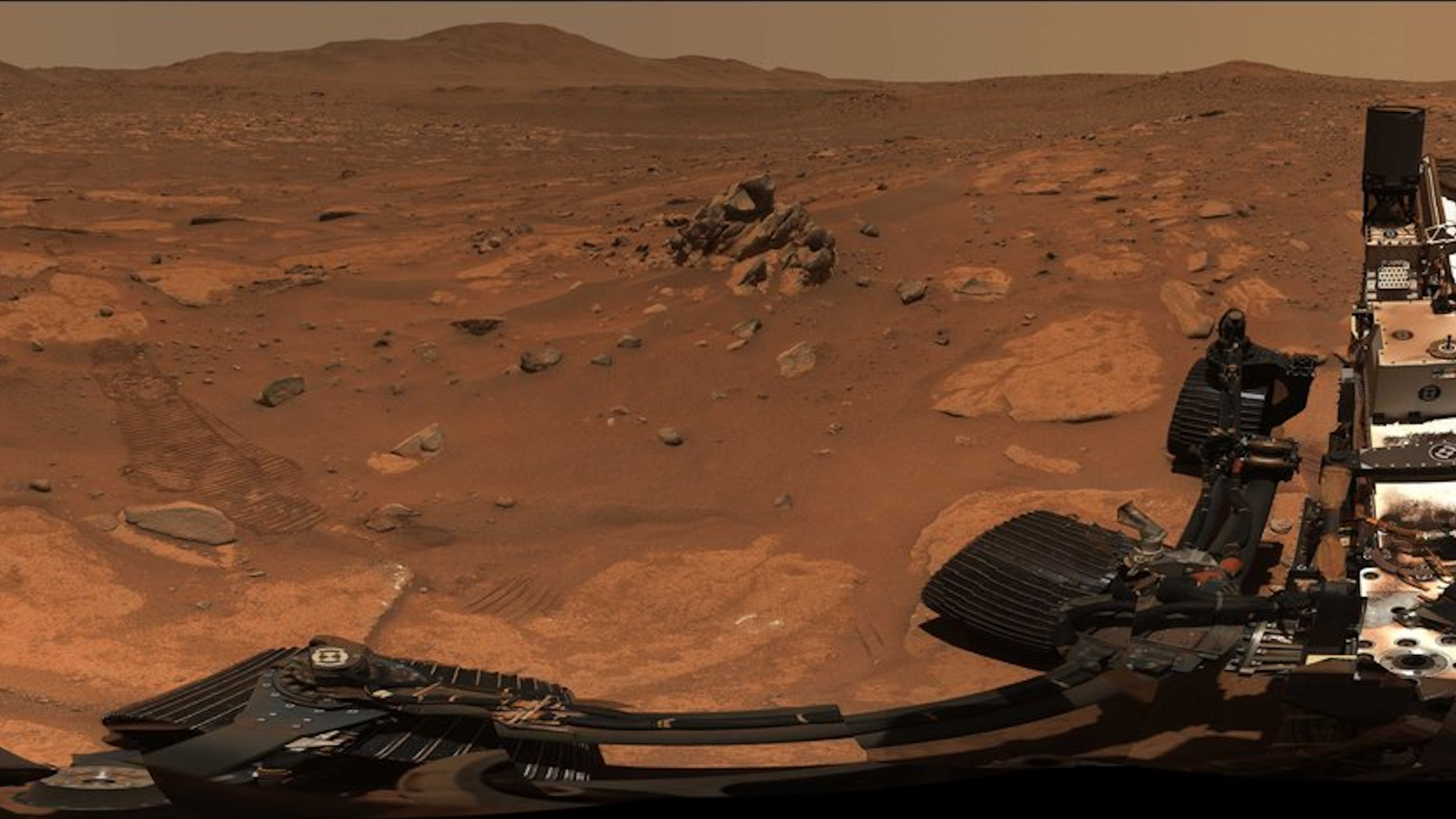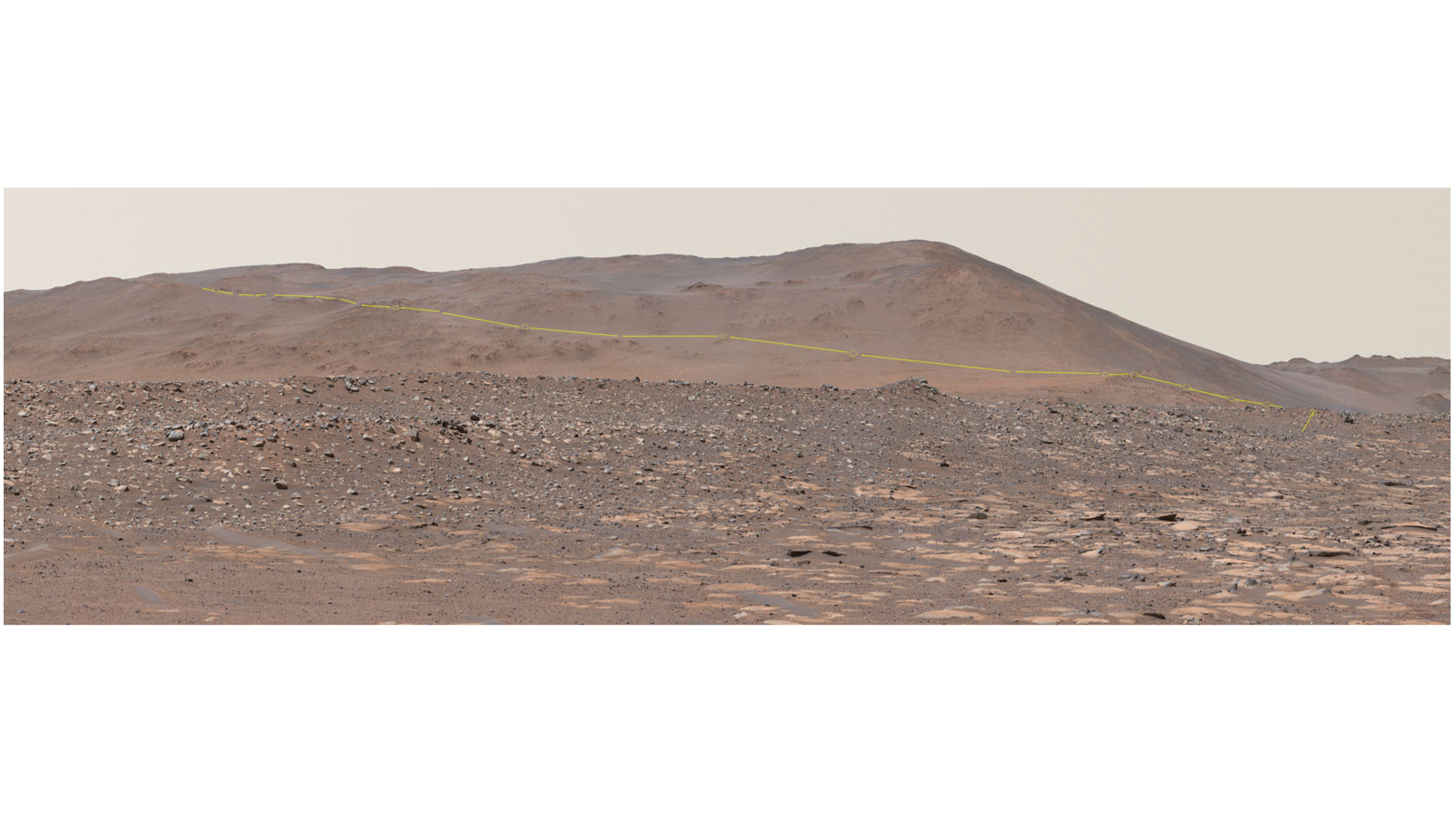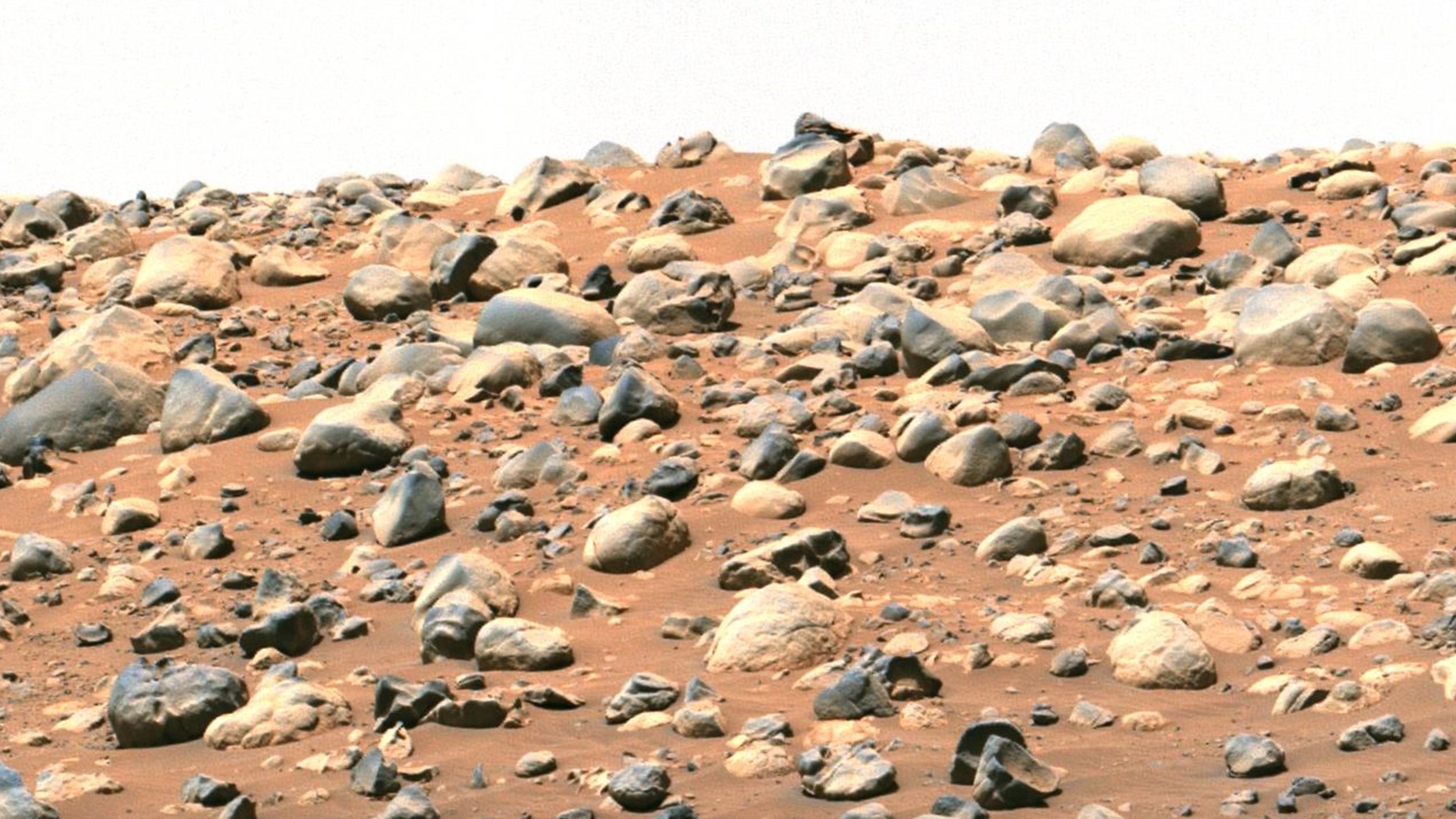
Nearly three years ago, NASA's Perseverance rover landed on Mars as part of a decades-long effort to study if the now-barren planet ever hosted life.
Jezero Crater once harbored a big lake and a river delta. The car-sized Perseverance, equipped with sophisticated cameras and science instruments, has so far been spending its days studying its environs and scooping up a variety of intriguing, 3.5-billion-year-old Martian rocks and soil scattered on the crater floor. As planned, the rover has dropped 10 sample-filled tubes on the ground, where they await the arrival of a different robot which will ferry them back to Earth for more robust scrutiny in the 2030s.
On Tuesday (Dec. 12), NASA announced that the $2.7 billion robotic explorer has fulfilled all its assignments while also notching 1,000 Mars days on the Red Planet. (One Mars day, or sol, lasts 24 hours and 37 minutes.) Initial analyses of the rover's collected rocks reveal that some of them contain plenty of carbonate-rich minerals and minuscule silica grains, a combination that likely would have preserved any organic molecules from the time and prevented them from degrading, akin to a "mummy's tomb," Morgan Cable, of NASA's Jet Propulsion Laboratory (JPL) in Southern California, told reporters during a press briefing on Tuesday.
Related: 12 amazing photos from the Perseverance rover's 1st year on Mars
Some of the rocks also show strong evidence for an intriguing mineral called iron phosphate. Here on Earth, phosphate is found in the DNA of all known life forms and also dissolves easily in liquid water. "We know that phosphorus is incredibly important," said Cable, "and now we have the strongest evidence ever collected that phosphorus was available in a form that life could access if it was there."
"I would say, mission accomplished," said Ken Farley, a geochemist at the California Institute of Technology in Pasadena who serves as the project scientist for the Perseverance mission. "We've acquired some very, very good samples."
Speaking at the American Geophysical Union (AGU) conference being held this week in San Francisco and online, Farley said the 1,000-sol milestone also marks the beginning of a new bonus mission starting next spring that will take Perseverance up and across the rim of Jezero Crater, and possibly even beyond. Scientists suspect that ancient Martian groundwater in this region interacted with rocks in a way that created an environment completely different from what the rover has explored so far.
"It's quite remarkable actually that there is a route that we can drive up with the rover," said Farley, adding that Perseverance will roll 2.4 miles (4 kilometers) from its current location to reach the start of its egress path. "That will allow us access to rocks that are much, much older."
Related: If Perseverance found evidence of life on Mars, would we recognize it?

While the bonus trek next year will aim to fill the 13 sample tubes remaining onboard the rover, the rocks collected so far are already helping scientists stitch together pieces of how Jezero Crater, thought to have been birthed by an asteroid impact about 3.9 billion years ago and later flooded by a long-lived river, evolved to be the parched, boulder-strewn area Perseverance is showing us today.
The drastic transformation occurred across three major phases, Libby Ives, part of the Perseverance team at JPL, explained during Tuesday's briefing. Sometime around 3.7 billion years ago, a large, fast-moving river breached the crater's rim and gushed in, carrying with it — and leaving behind — light-colored, fine-grained sand and mud seen by Perseverance in an area nicknamed the "Bacon Strip," Ives said.
Floodwaters then apparently filled the crater until the lake was 100 feet (30 meters) or so deep, which can be inferred from the gradually changing layers of rock types plastered onto one another, said Ives. The third and final phase witnessed another sudden colossal flood that dumped round, 3.3-foot-wide (1 m) boulders across the crater.
"These are big rocks, probably not something you're picking up by yourself," said Ives.

At some point in Mars' history, the water flooding Jezero Crater — and flowing in other parts of the planet — escaped into space, "never to be seen again," said Farley. "Had that not been the case, this would all be gone."
The surface water's disappearance is thought to have been accelerated by the then-young sun's frequent solar storms, which stripped away Mars' once-thick atmosphere. As its atmosphere got thinner and thinner, the planet lost more and and more of its surface water, eventually becoming the frigid desert we know today. (Mars' atmosphere is currently about 1% as thick as Earth's is at sea level.)
Among countless boulders cluttering the Martian surface today, scientists are particularly interested in fine-grained rock at a spot named Hidden Harbor, whose thin, white sulfate veins are evidence for ancient water activity.
"This is the kind of rock that we would pull apart grain by grain and really study individual grains very, very carefully," said Meenakshi Wadhwa of Arizona State University, who serves as the principal scientist for the Mars Sample Return (MSR) mission, which aims to bring Perseverance's samples to Earth.
"This would be one of the most audacious robotic missions ever conducted," said Wadhwa. "It remains incredibly important for its high strategic and scientific value."
Related: Life on Mars: Exploration & evidence
Scientists don't yet have a precise timeline for when Mars' surface was habitable and when it became parched, as that information can be learned only by time-dating Martian rocks using equipment here on Earth. Robust analysis would also reveal if the intriguing minerals that Perseverance has spotted are really evidence for life as we know it and not just byproducts of physical processes.
In Tuesday's briefing, Lori Glaze, director of NASA's Planetary Science Division, emphasized the importance of returning samples collected by Perseverance to Earth. Study of that material in well-equipped labs around the world "is what will provide the ground truth for decades of remote sensing and in-situ data that we have from exploring Mars," Glaze said.
NASA is spearheading the ambitious MSR mission, which aims to launch an orbiter and rocket-toting lander in 2030 but remains under stress due to its cost overruns and unprepared architecture. In response to a report from an independent review board that urged a rethink of certain aspects of the design, Glaze said the mission team is currently evaluating different options to feasibly return those samples to Earth.
As per the current plan, Perseverance would load samples into the NASA lander, which would then launch the material to Mars orbit. Up there, a European orbiter would grab the sample capsule and haul it back toward Earth. But the new bonus trek next year will move the rover outside the crater’s rim and away from its initial stash of samples on the crater floor, so team members are yet to figure out exactly where the future sample retrieval lander should touch down. Glaze said one option may be to perch the lander wherever Perseverance is at that time, or drive the rover back to the crater floor near the dropped samples.
When those samples ultimately reach Earth, they will be preserved "for decades and generations to come so that scientists who haven't even been born yet can address questions we haven't thought of yet, using instrumentation that hasn't been invented," said Glaze.







